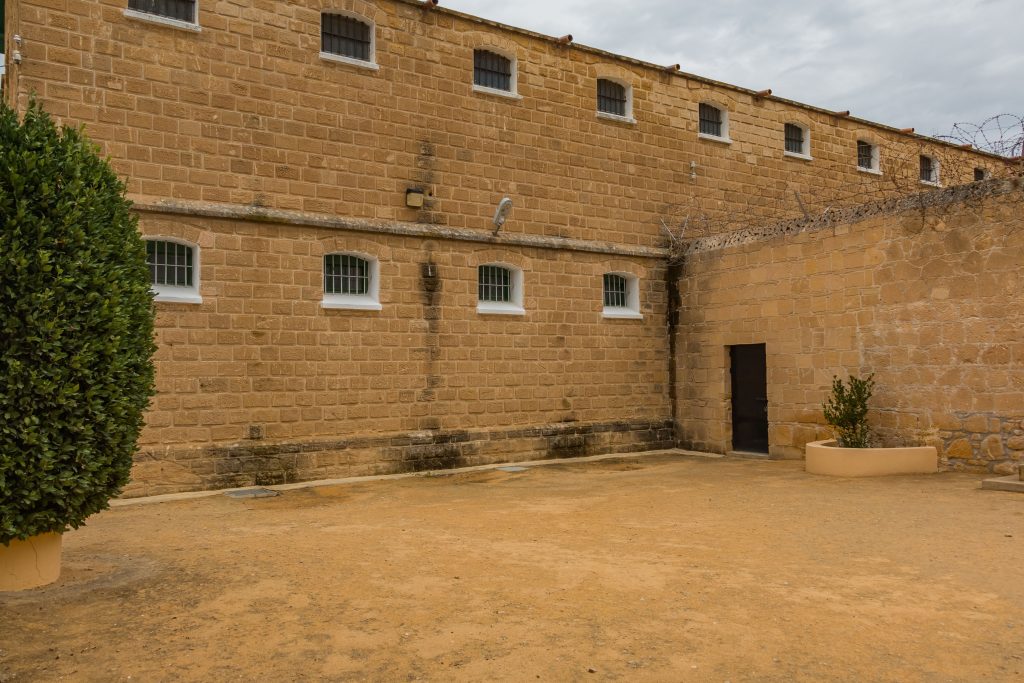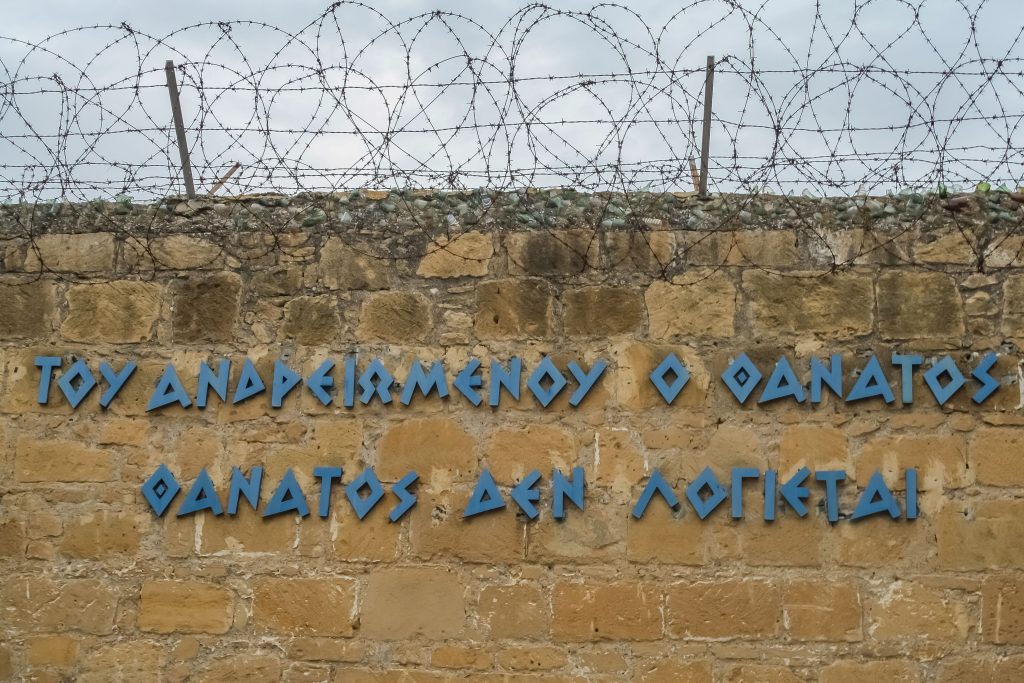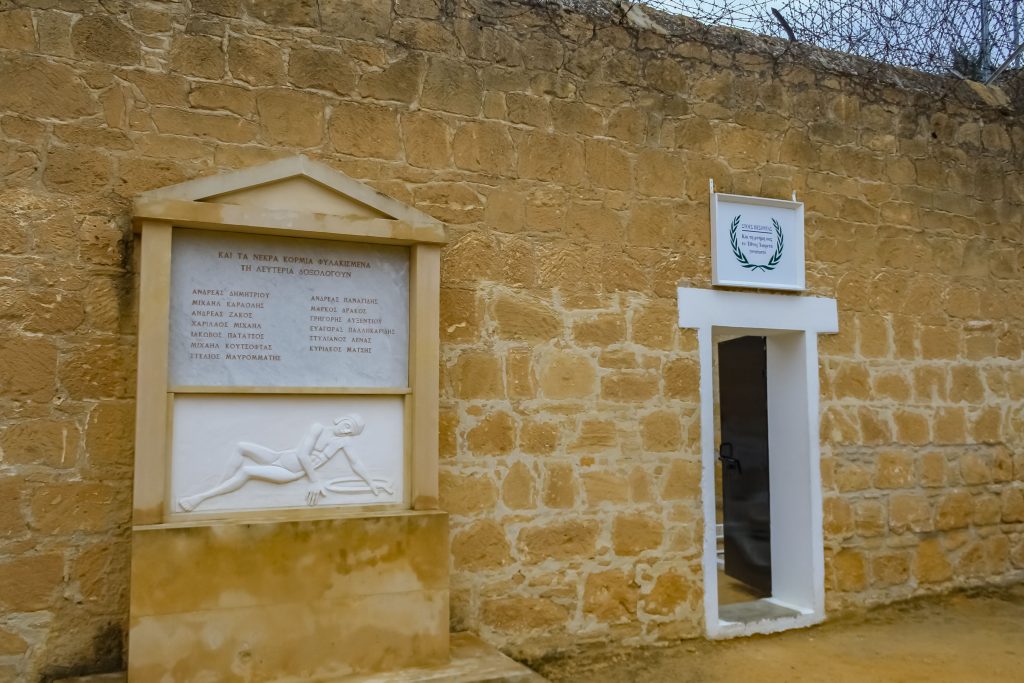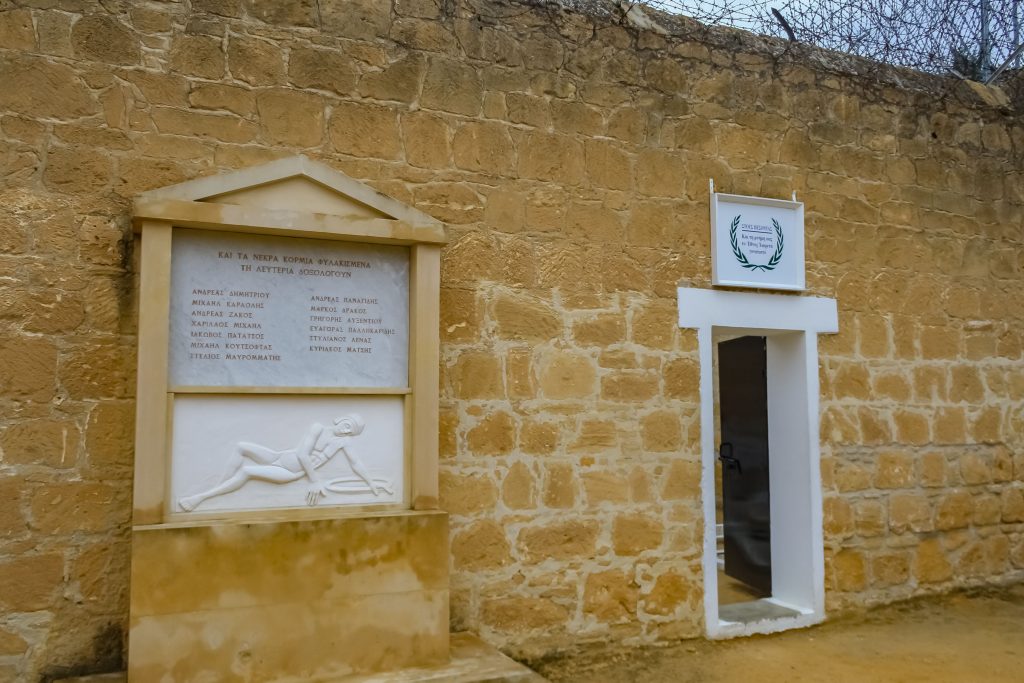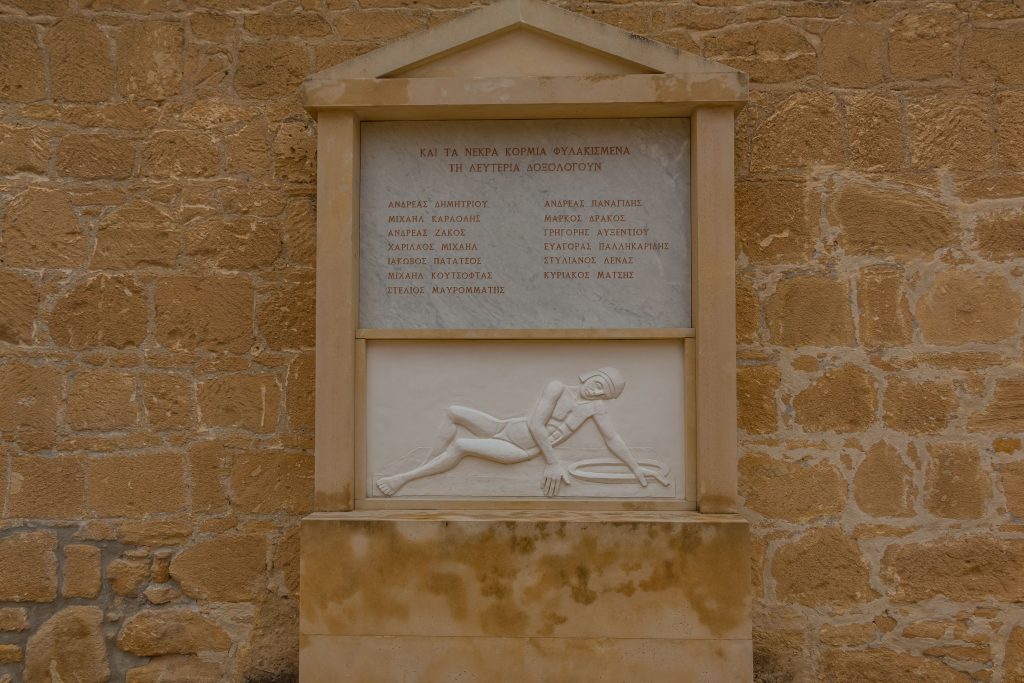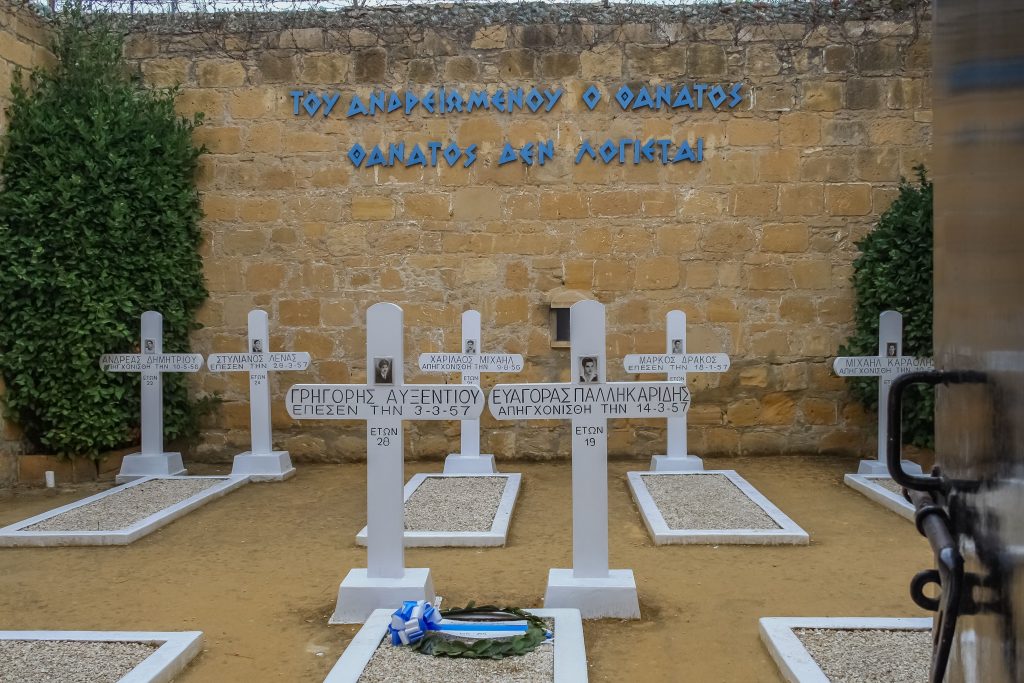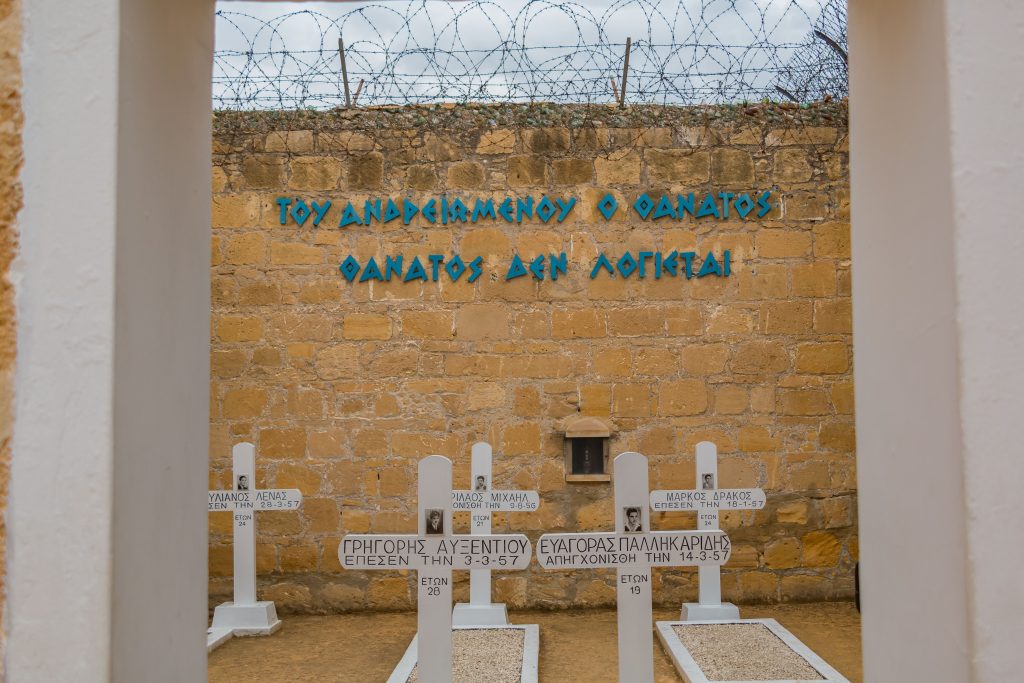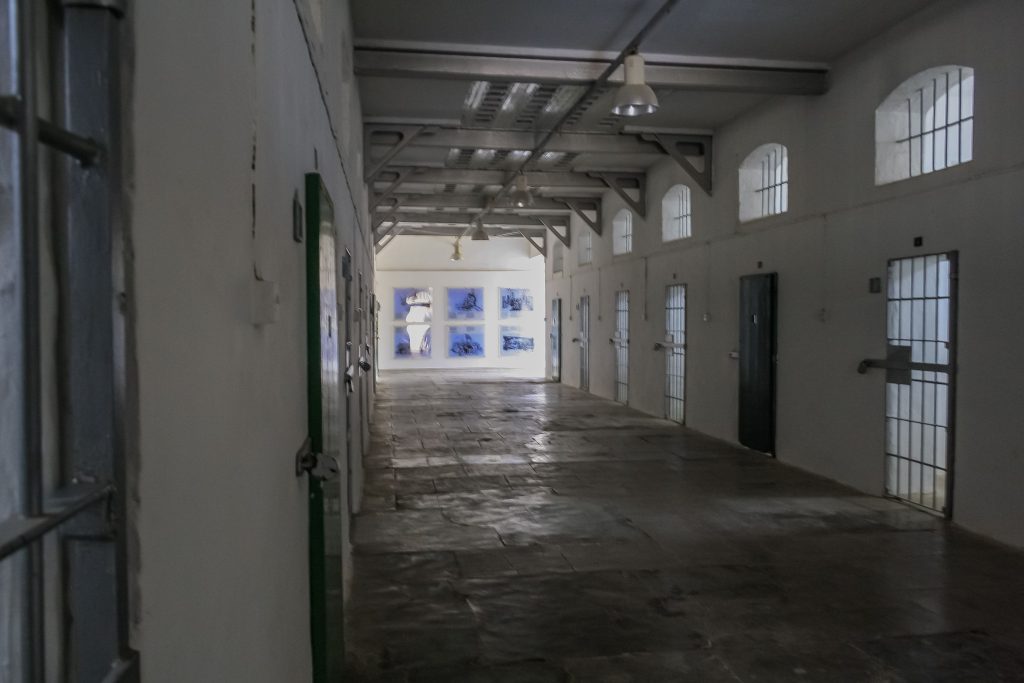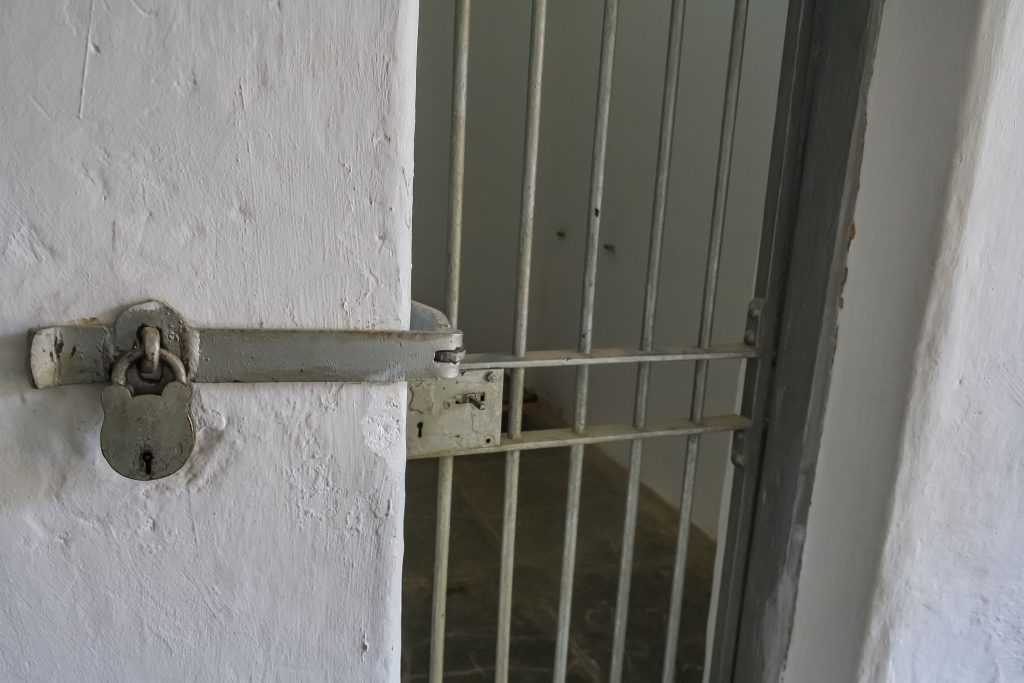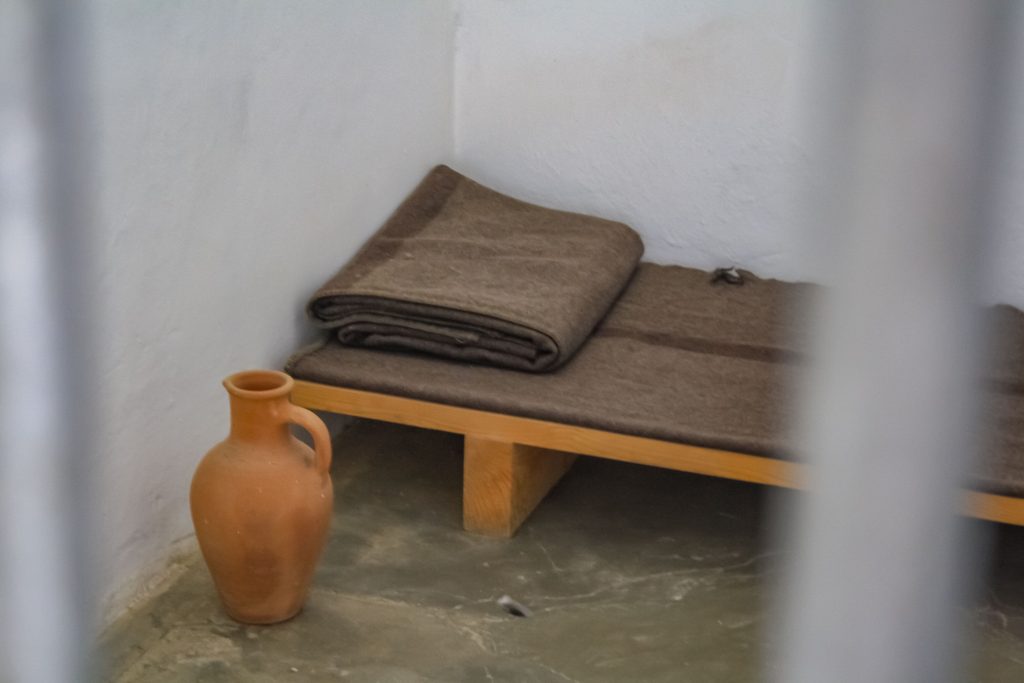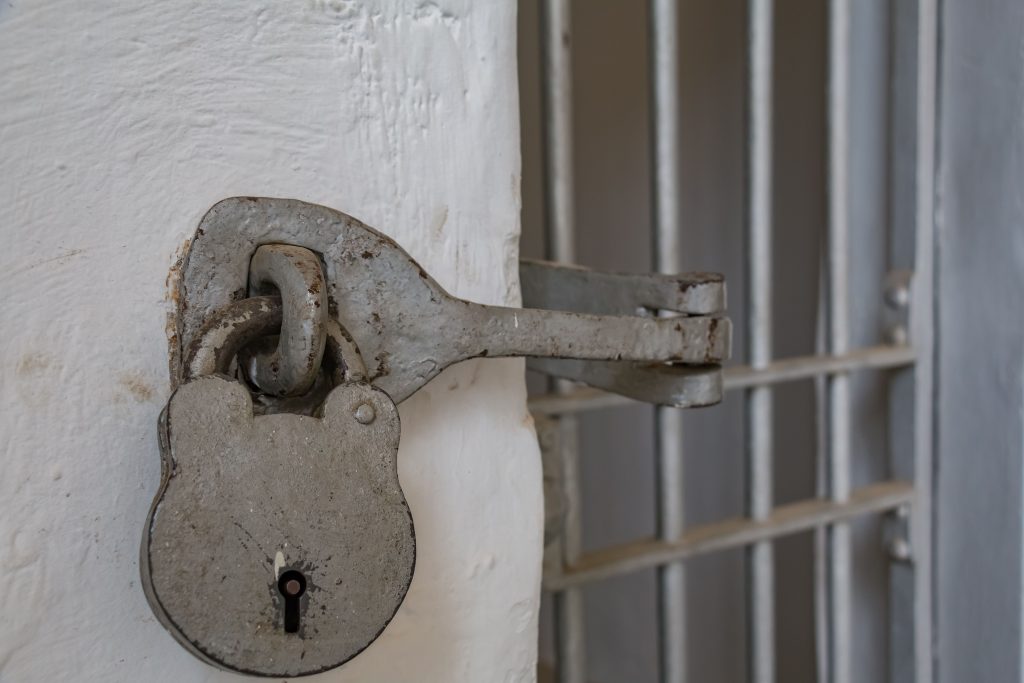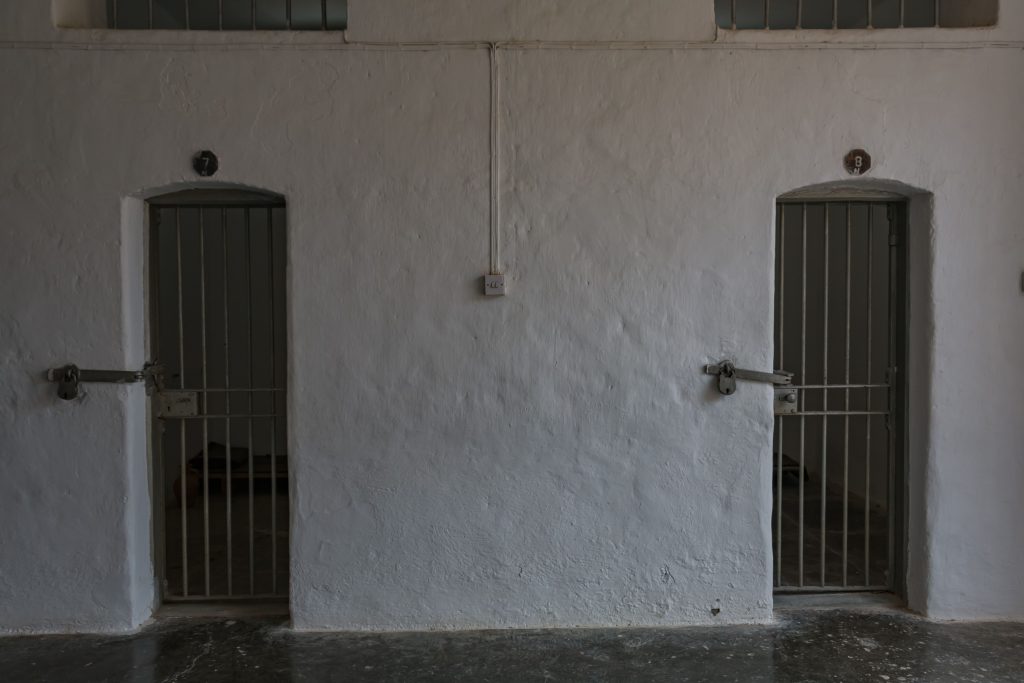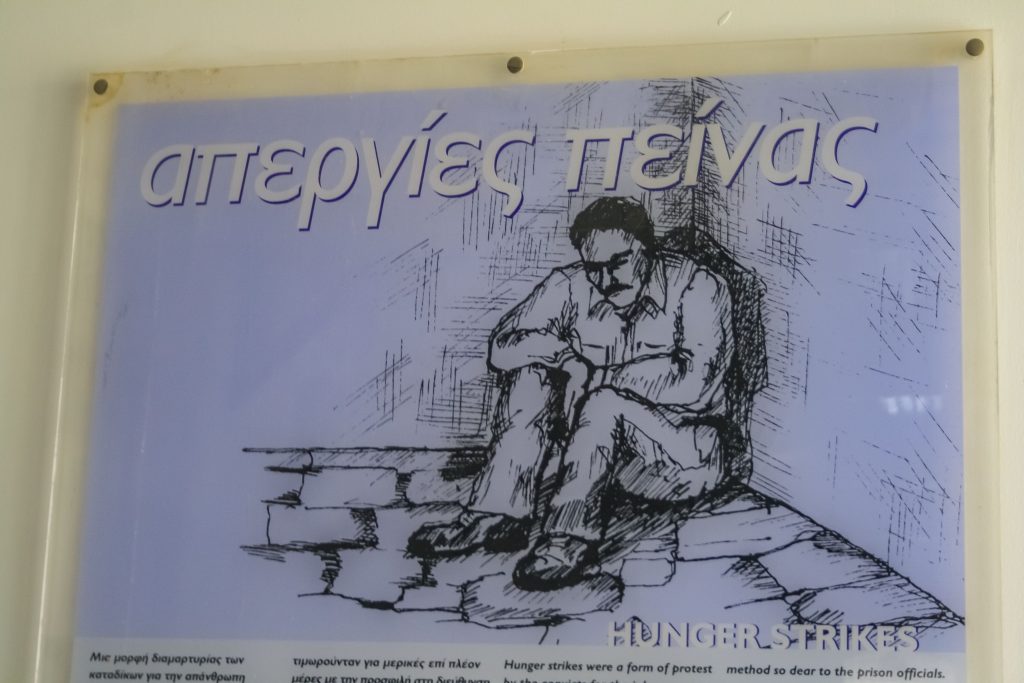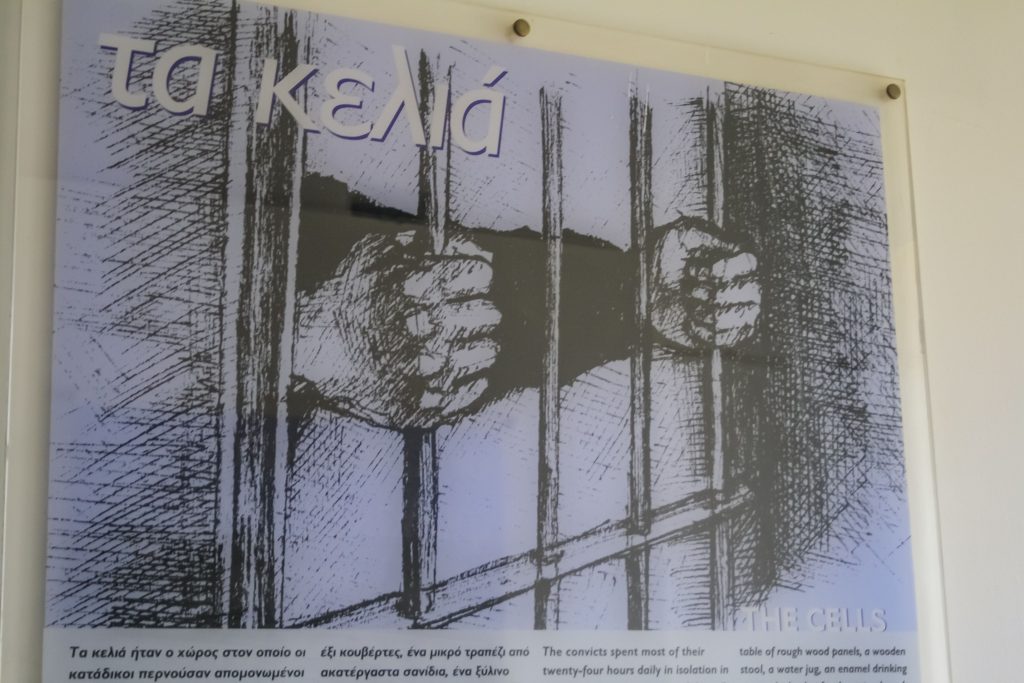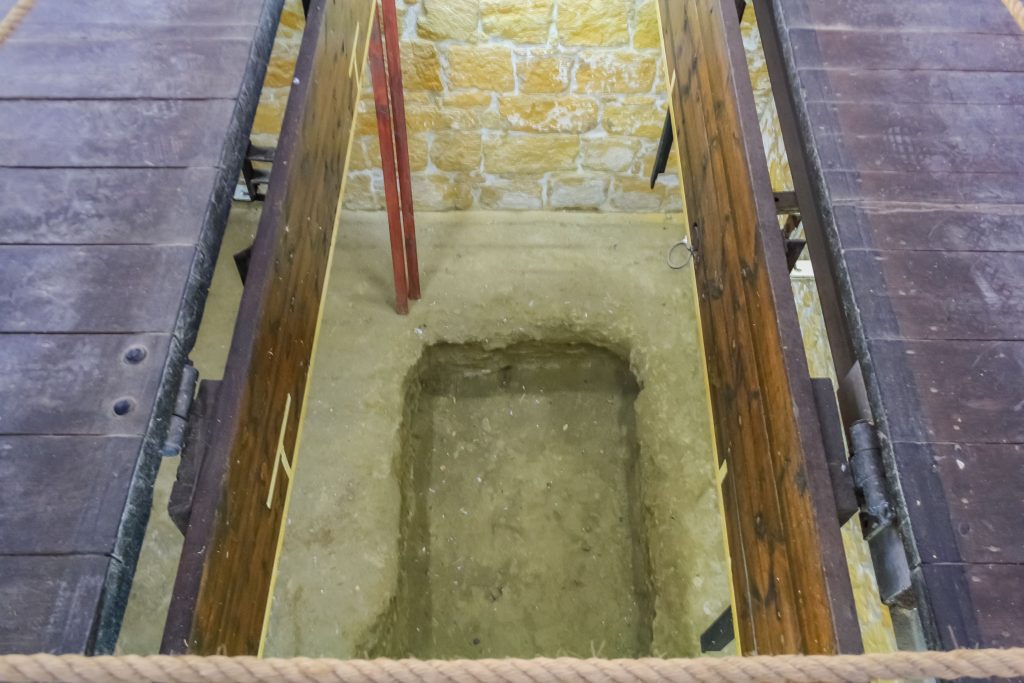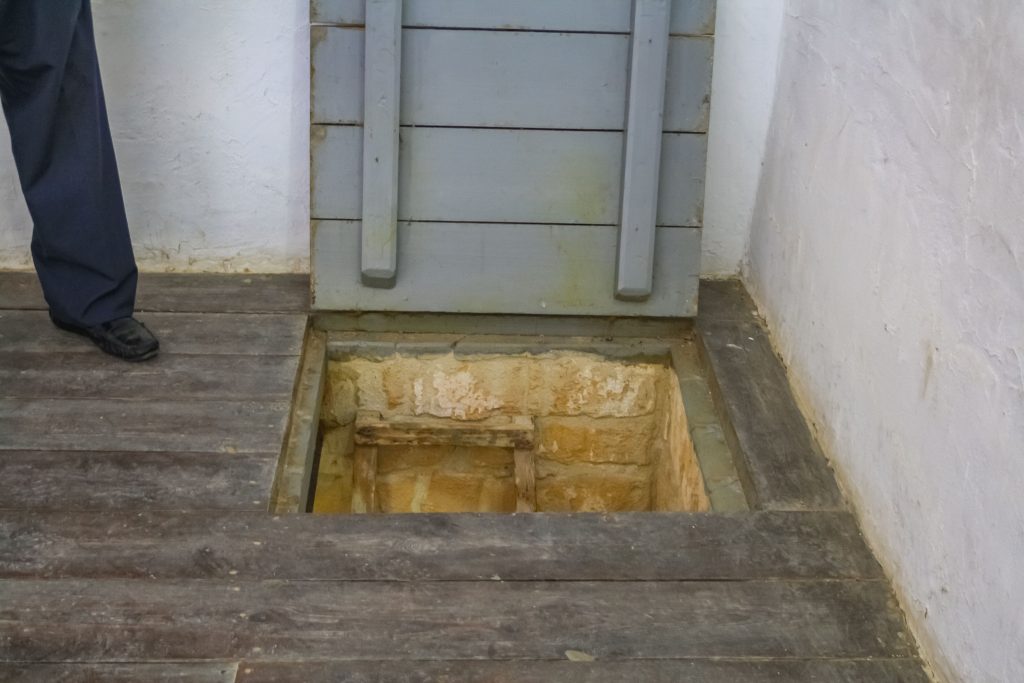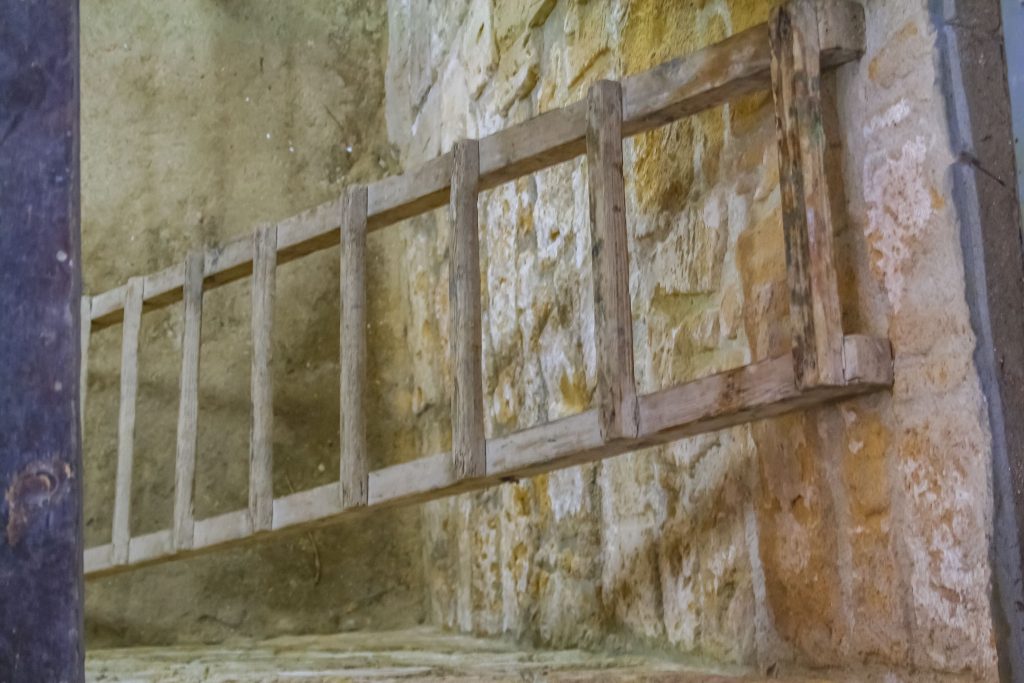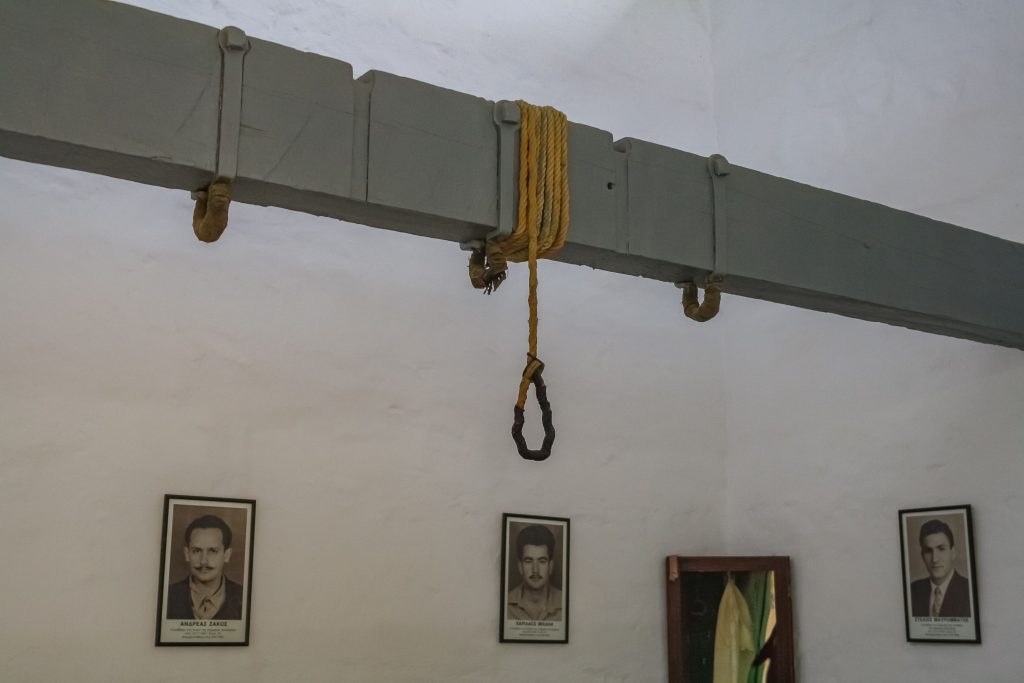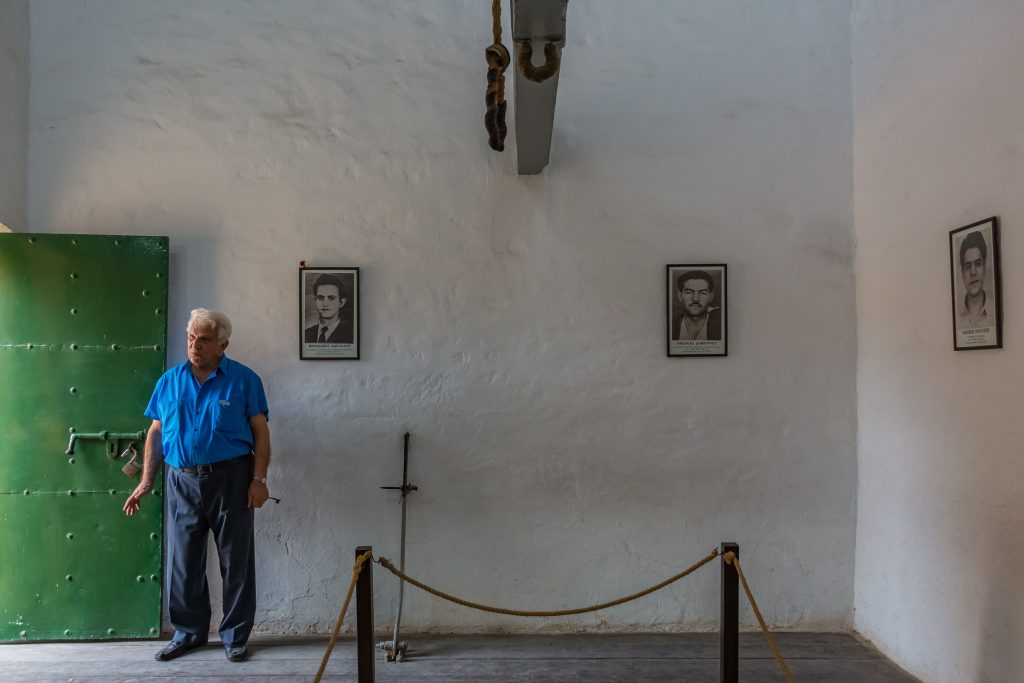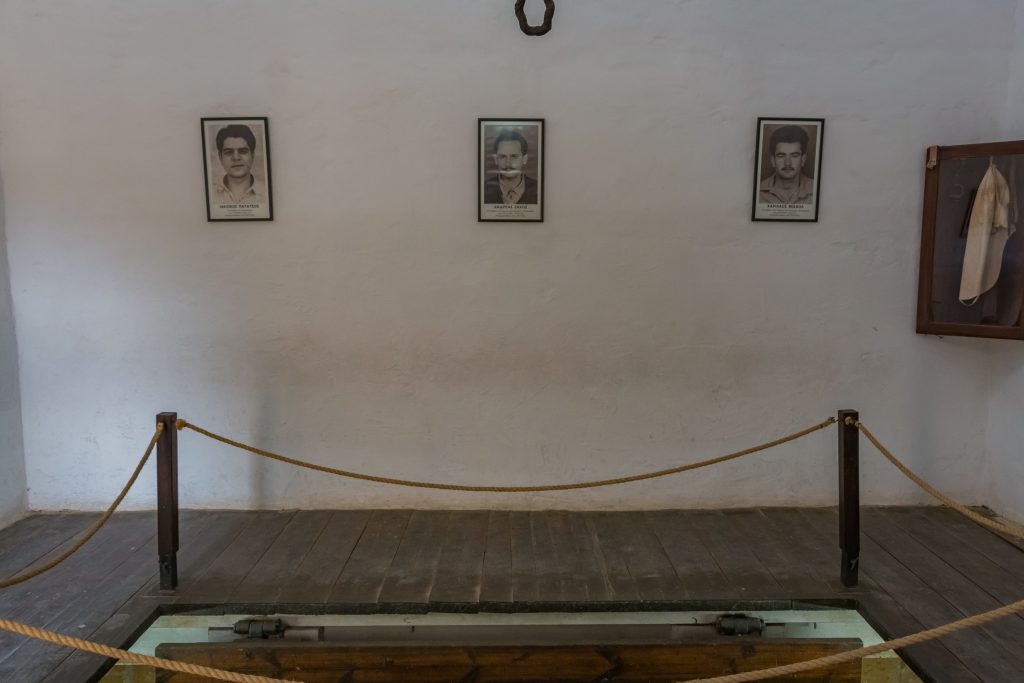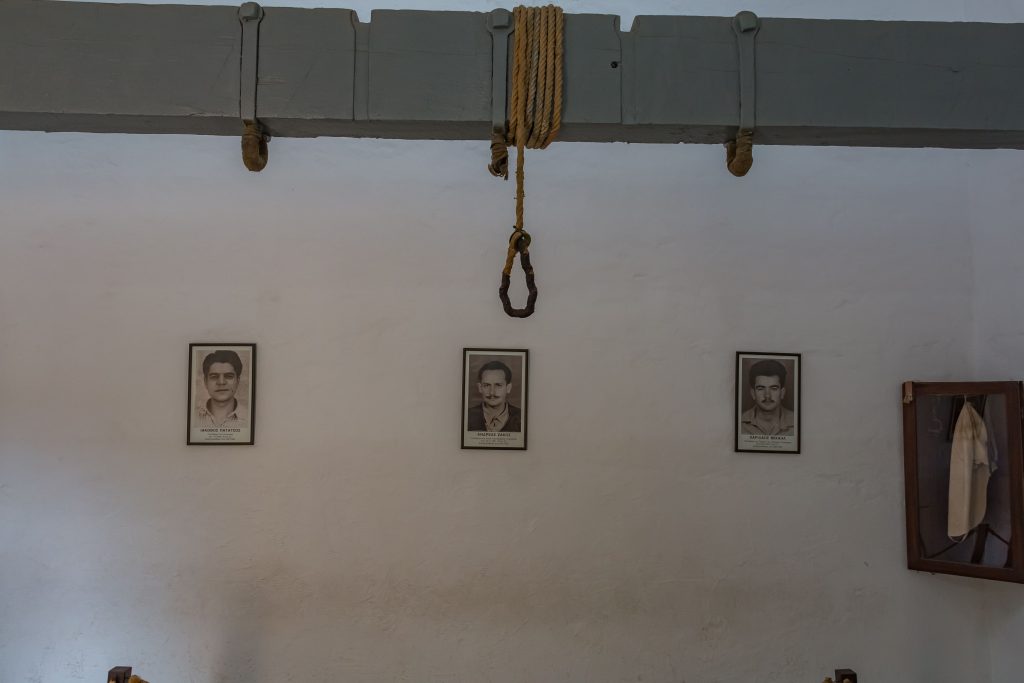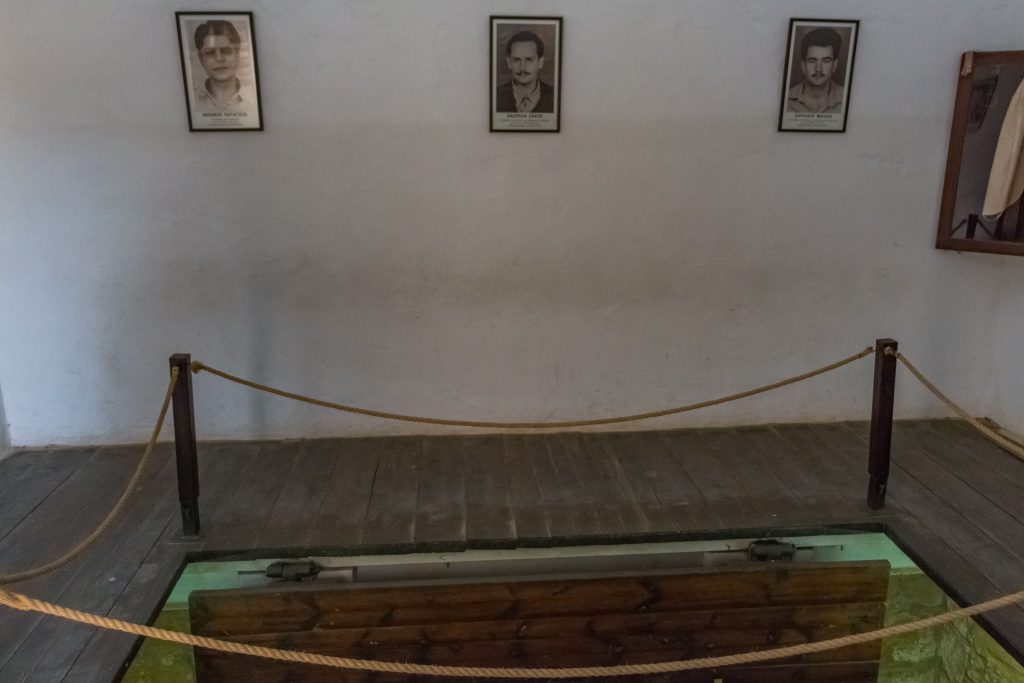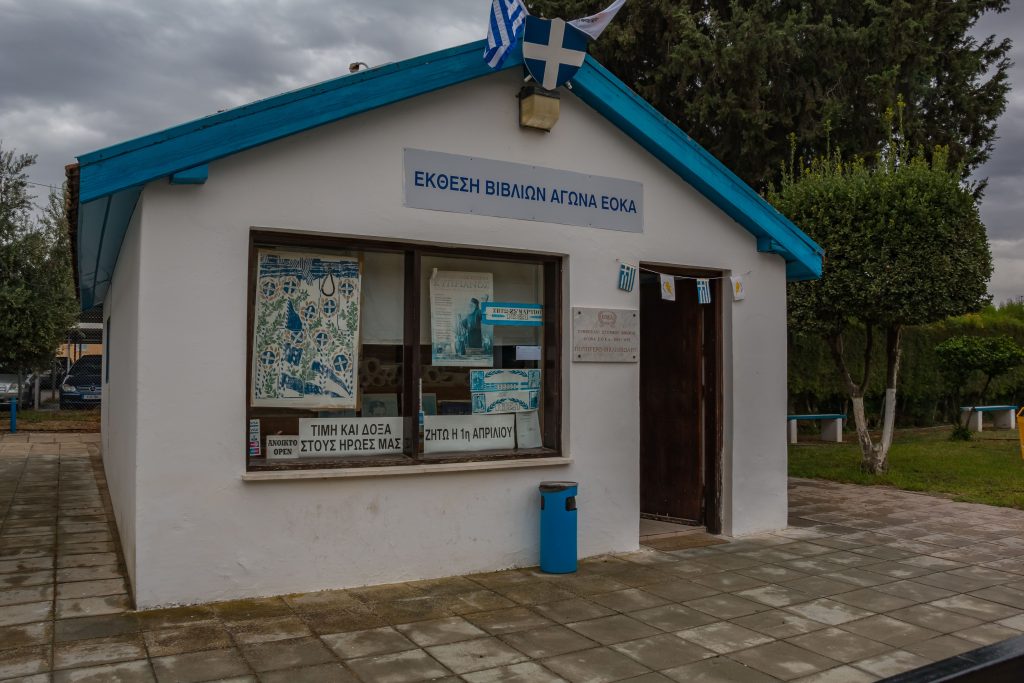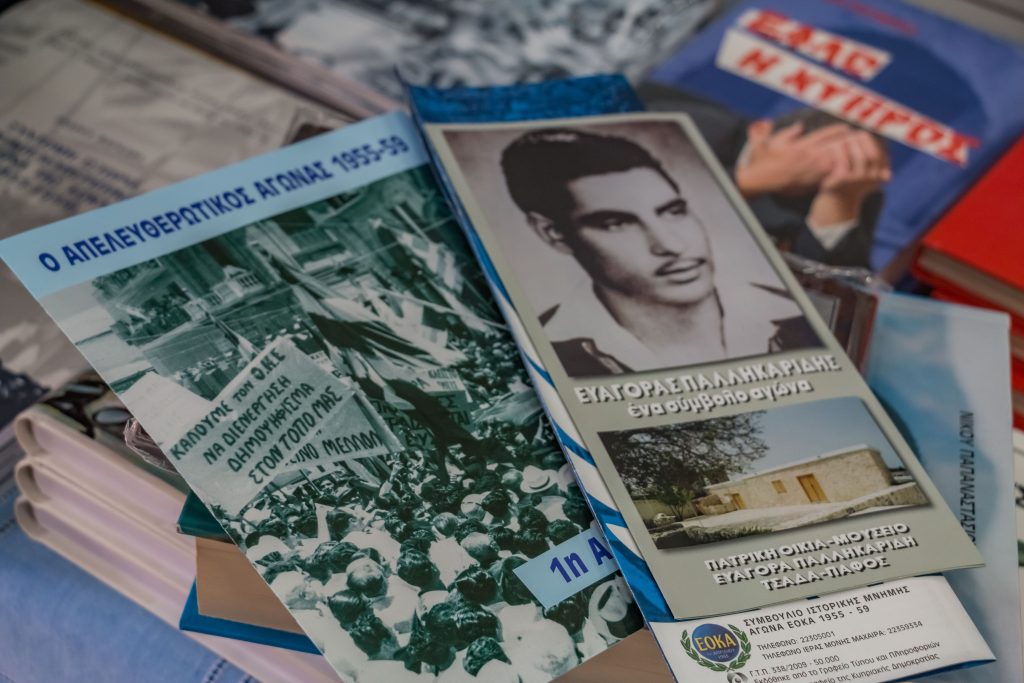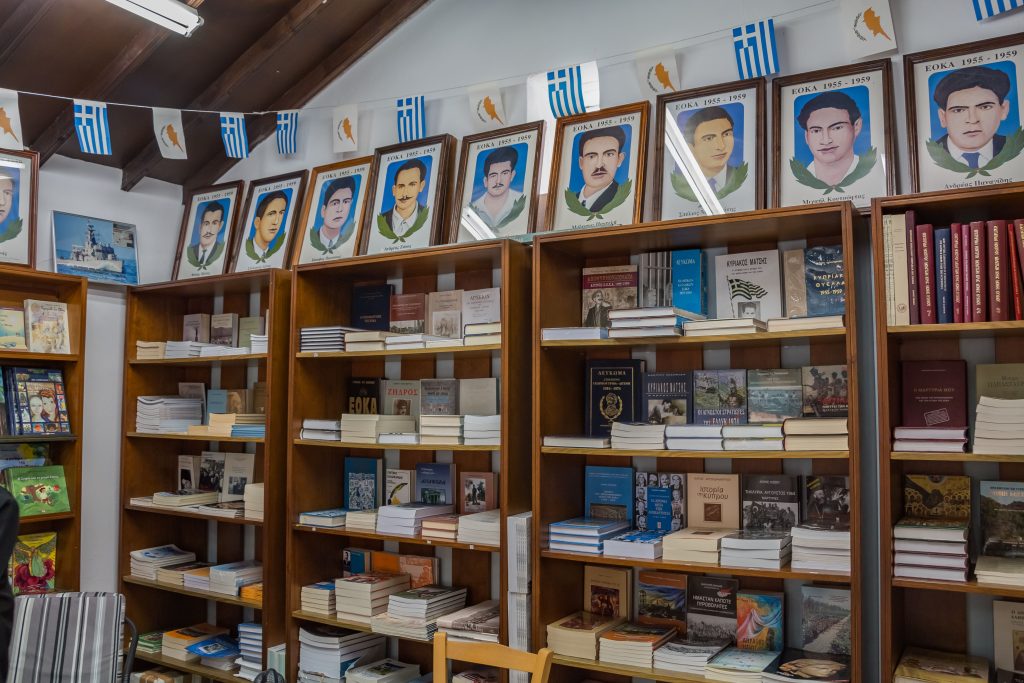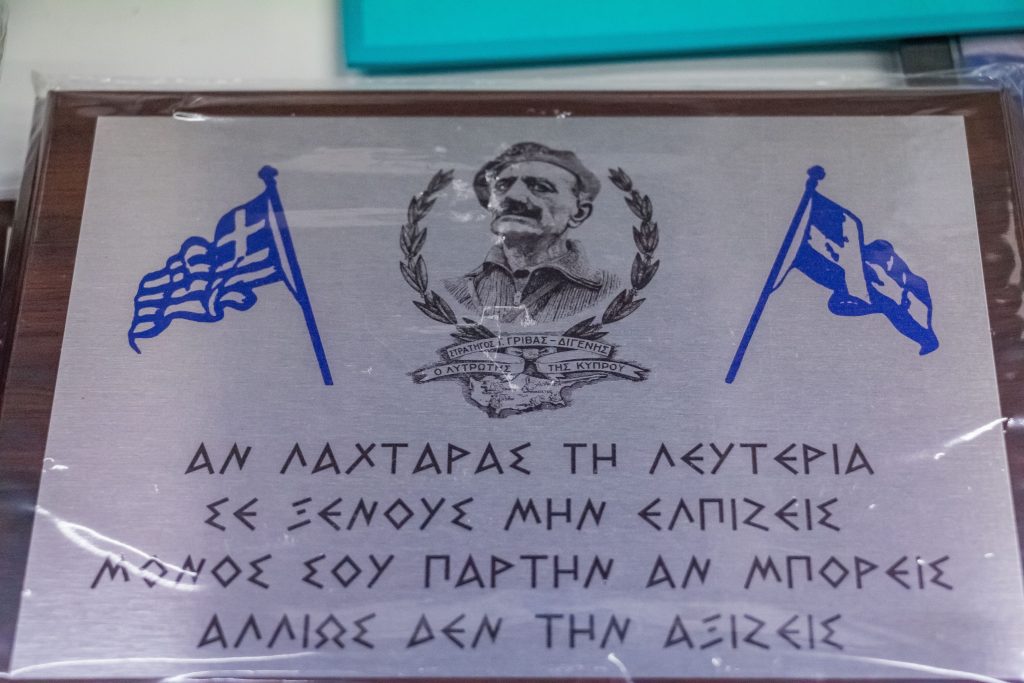Imprisoned Graves

The Imprisoned Graves are undoubtedly one of the most historic places on the island of Cyprus and one of the emotionally "charged" sights of culture that carry the black and dark pages of the brightest book of Cypriot history, the independence of the great island.
Passing the threshold of Nicosia’s central prisons, the visitor faces an enclosed area, a small cemetery surrounded by tall walls, built by the British under the term of the Governor John Harding during the liberation struggle of EOKA (1955-1959). The Imprisoned Graves was the place where the hanged and the leading figures of the National Organization of the Cypriot Fighters (EOKA) who were sentenced to death by the English for their action in the liberation struggle were buried. Instead of giving the bodies to the relatives, they were buried here, beside the cells of the condemned to death and the gallows, inside the prison area, hence their peculiar name of Imprisoned Graves. In the words of the tourist guide at the prisons, Dimos Vryonidis, who was one of the prisoners and lived through the events, "Cyprus is probably the only country in the world that has imprisoned heroes."
The funeral of the fighters took place immediately after their hanging, with the presence of only the jail priest who performed the funeral rites, outside the closed entrance of the cemetery. Then, the British buried them, without the attendance of a relative or anyone else, so that the heroes’ funerals would not be turned into mass rallies or militant demonstrations. The relatives finally managed to visit the tombs only after the end of the fight for the liberation.
13 heroes were buried in the Imprisoned Graves, 9 of whom were executed by hanging, 3 fell on the battlefield and 1 died in a military hospital after his injury.
The 9 hanged heroes were aged 19-24 and were executed in 1956 (Mikhail Karaolis, Andreas Demetriou on May 10, Andreas Zakos, Iakovos Patatsos, Charilaos Michael on August 9, Michael Koutsofta, Stelios Mavrommatis, Andreas Panagidis on September 21st) and Evagoras Pallikaridis was hanged on March 14, 1957.
The four fighters who fell in battle and were also buried in the prison cemetery, are Markos Drakos, Stylianos Lenas, Kyriakos Matsis and the “legend”, Grigoris Afxentiou. In fact, to save space, the English buried the eight dead in four graves (Andreas Dimitriou and Stylianos Lena, Andreas Zakos and Kyriakos Matsis, Andreas Panagidis and Michael Koutsofta, Grigoris Afxentiou and Evagoras Pallikaridis).
In another building and next to the glorious graves of the fighters, the cells of detention have been preserved, just as they were at that time, giving light to the conditions and difficulties of the prisoners. The cells, next to each other, had their doors covered with a wire mesh that gave the prisoners vertigo. The only one who came into it was the prison priest who, before the execution, visited the death row for the prisoners to confess. On the walls of the building, there are informative texts regarding the detention conditions, hunger strikes, escape attempts and more.
In another place, perhaps the most emotional that the visitor will face, dominate the gallows, and beneath them, a hatch with two doors that opened and through which the English came down to pick the hanged and take them to the grave. Hanging usually took place shortly before or just after midnight, with the presence of the prison director, Nicosia’s regional prefect, a magistrate, a military doctor, and the executioner, all of whom were English. Prior to the imminent execution, a sack rehearsal was made and depending on the height and weight of the executed, the British adjusted the length of the ropes accordingly. Then they put the handcuffs, another rope on their feet, and a hood on the heads of the heroes. The rope exhibited in the space is one of the three ropes with which they hung the heroes. The other one is at the Nicosian Struggle Museum, and the third is said to have been taken with them by the English as a memento. On the walls of the building and around the gallows, there are portraits of the fighters who have lost their lives here. In spite of horrible physical and mental torture from the time of their arrest to the time of execution, the fallen heroes showed a profound moral and unshakable faith, chanting religious chants and the National Anthem, even as they were led to the gallows.
The Imprisoned Graves today is a place of holy pilgrimage, a monument of heroism and one of the most holy monuments of Cypriot Hellenism for its union with Greece. They are visited by ordinary citizens, and by deputies, heads of state and prime ministers, to pay tribute to the brave Cypriots who gave their blood for the independence of Cyprus. The area of the graves, the gallows and the cells was reconstructed to its original form in 1997 and was inaugurated by the then Minister of Education and Culture, Georgios Hatzinikolaou.
Outside of the sacred space, accessible to wheelchair users, there is a bookstore pavilion with an exhibition of books about the EOKA struggle, where the visitor can find many books about its fights and fighters, as well as information leaflets that are given free of charge in Greek, English and German. There is also parking on site.
Imprisoned Graves
Norman 4 PC 1702 Agios Pavlos, Nicosia, Cyprus
Opening Hours: Monday-Sunday: 08: 30-13: 30
Phone: 00357 22303994
Fax: 00357 22303994

